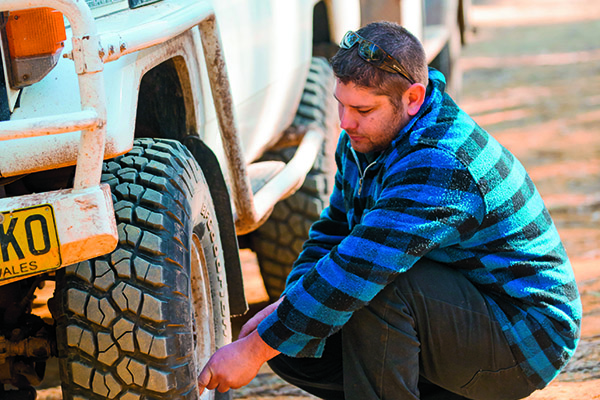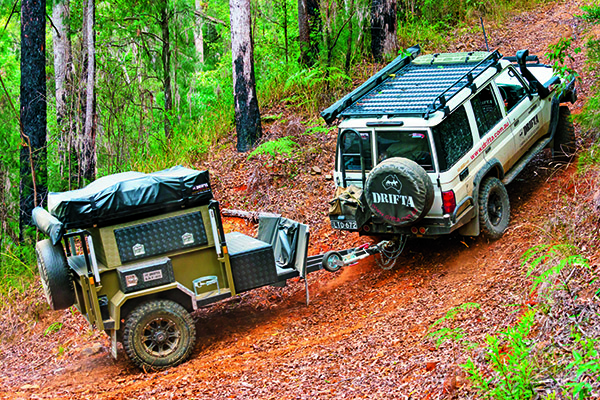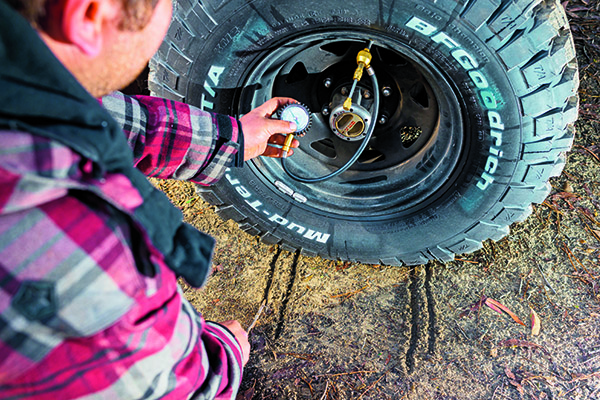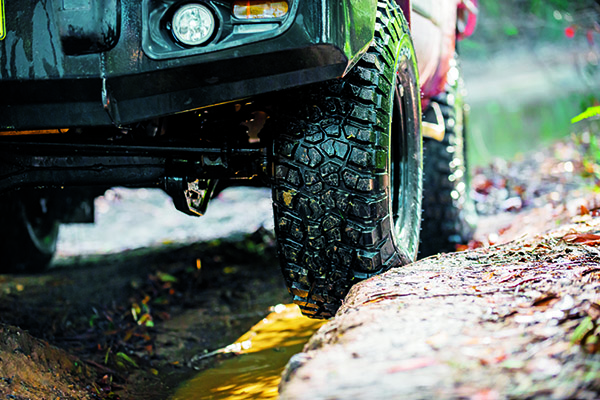Did you know that just a few inches of your vehicle’s tyres actually touch the ground at any given time? That’s pretty crazy when you consider what can happen if you break traction at the wrong time. Your tyres are, perhaps, the most important part of your setup, so it pays to have a good understanding of not only which tyre suits you the best, but how you can get the most out of them. The problem is that us 4WDers are spoilt for choice these days.
I mean, there are just so many options to choose from. If you get it right, you could be looking at the single most effective upgrade to your setup in terms of pure performance. So to help you see clearly through the murkiness, here’s our special guide to getting true value from your 4WD or camper trailer’s next set of shoes!
MUD-TERRAIN vs. ALL-TERRAIN TYRES
When it comes to purchasing your next set of tyres, the key is be realistic about how your vehicle is predominately used, and make an educated and practical compromise between on-road and offroad performance. I mean, sure, the look of an aggressive mud-terrain tyre is enough to make anyone grin like grandma on bingo night, but do you really need it? Here are a few things to consider: traditionally, mud tyres were a real nightmare on sealed roads. In fact, they weren’t much good for any terrain other than, well, mud! Believe it or not, their tendency to dig themselves down into the sand rendered them useless on the beach, too. However, with modern technology being implemented into their design these days they’ve definitely picked up their act, with mud-terrain options that offer good all round performance including much better on-road manners.






A good all-terrain tyre will still generally be much quieter on the blacktop and offer better handling, performance and tread life, but you can’t deny the extra traction a mud tyre produces in muddy terrain or on rocks. The other biggie is that mud-terrain tyres typically offer more side wall strength/puncture resistance. So, not only are they more reliable offroad but the sidewalls will handle running in lower pressures regularly much better, too. So if you’re deciding between the two types of tyres, ask yourself: how often do you head offroad and what type of terrain do you tackle? If you only lock the hubs in every second month or you only tackle dirt roads or the occasion run up the beach, then an all-terrain tyre is your best bet. If you hit the tracks on a regular basis and tackle your fair share of adventurous outings, then the increased traction and resilience of a mud-terrain tyre is more than likely worth sacrificing a bit of tread life and increase road noise.
DOES SIZE MATTER?
When it comes to choosing the right size tyre for your 4WD, there’s plenty to consider. Larger tyres can really improve your vehicle’s offroad capability. It’s the only real way to increase your vehicle’s diff and body clearance, and improves the approach and departure angles, too.
In saying that, there’s a swag of pitfalls to negotiate when choosing this option. First up, if you’re going a few sizes up, there is a good chance they’ll scrub out (rub against the wheel arch) when your suspension is travelling up or on full steering lock. Stability will also be affected due to the increased centre of gravity. Your speedometer will require adjustment as the calculations of your wheels’ rolling diameter change and your engine will have to work harder to push the extra weight and increased rolling diameter of the tyre, resulting in reduced performance and decreased fuel economy.
As the larger tyre rotates less than the original size, it alters the way a vehicle’s geared, a bit like installing taller diff ratios.
That means you’ll crawl faster in low-range, which can lead to less control on steep descents.
Larger tyres also place more stress on directly related components like CV joints, wheel bearings and even steering boxes. It even decreases your braking efficiency.
The reality is, if you do decide to increase the size of your tyres, it’s likely you’ll also need to spend fair bit of cash on engine power modifications, larger brakes and a change of diff ratios to gain back some of that lost performance, so proceed with caution.
INTERPRETING THE SPECS
There are a whole heap of details indicated on most tyres, but it’s like reading a different language if you’re not familiar with the terms. The good news is you’re about to receive a crash course! Yep, let’s kick this one off by deciphering the type of tyre it is you’re looking at and what vehicle it is designed for. If you spot the letter ‘P’ it stands for passenger metric, LT stands for light truck and ‘T’ is for temporary use.
The numbers following typically state the tyre’s size or dimensions. The first of the numbers indicates the tyre’s width in millimetres, while the second number is the sidewall’s size indicated as a percentage of the tyre’s width. This is typically known as the aspect ratio or profile. So if the numbers read 285/75 R16 that means the tyre is 285mm wide and the side walls are 213.75mm tall (or 75 per cent of 285mm). The third number following the R reveals the size of the rim in inches.
If want to know the tyre’s diameter you’ll need to do the sums. Having established that the tyre walls are 213.75mm, we need to convert them to inches, which gives us 8.42in. Multiply this by two, which accounts for the upper and lower sidewalls and you get 16.8in. Then add in the 16in rim diameter (as in R16) and you’re left with 32.8in, which is the closest equivalent to the ever-popular 33in tyre size.
The next set of numbers is the load rating. This number should be cross referenced with a load index chart to determine the maximum load capacity per tyre. The letter following this number is the speed rating, which once again must be cross referenced with the appropriate chart.
FINAL THOUGHTS
So there you have it, all the basics you need to help you choose the right shoes for your next offroad adventure. Upgrading from factory road-terrain tyres to something a little more up to the task is probably the easiest way to gain capability and reliability off the beaten track. And the more you learn how to make your tyres and tyre pressures work for you, the more you’ll get out of your purchase. It’s hard to argue with that, eh?
Check out the full feature in issue #105 August 2016 of Camper Trailer Australia magazine. Subscribe today for all the latest camper trailer news, reviews and travel inspiration.




